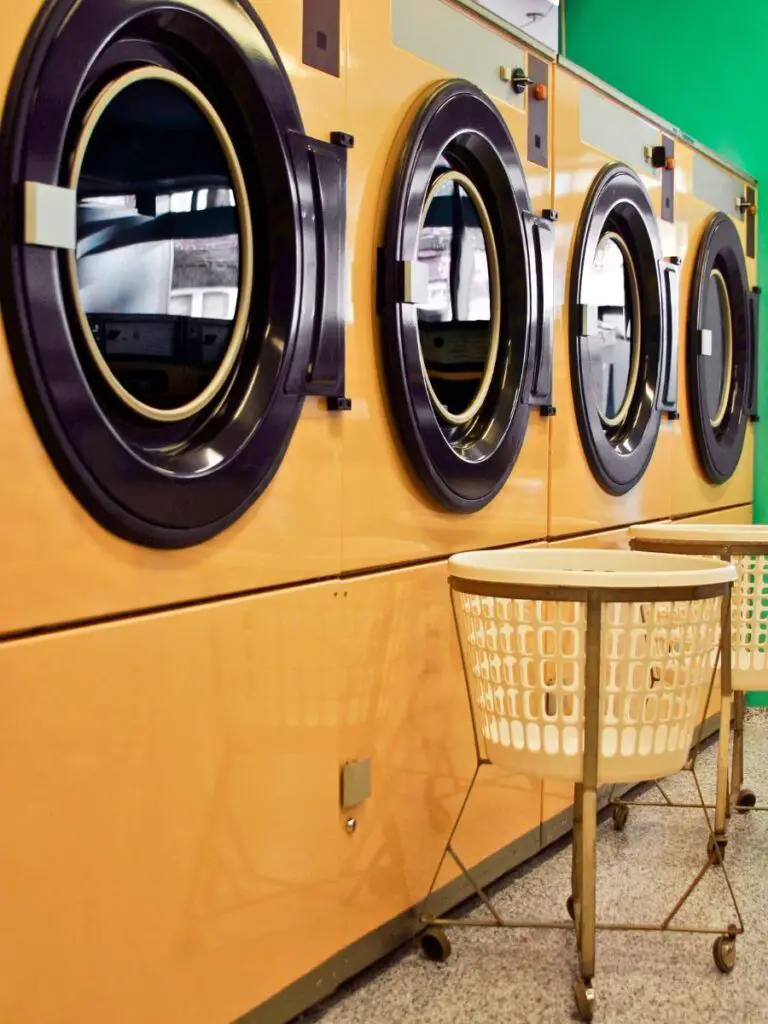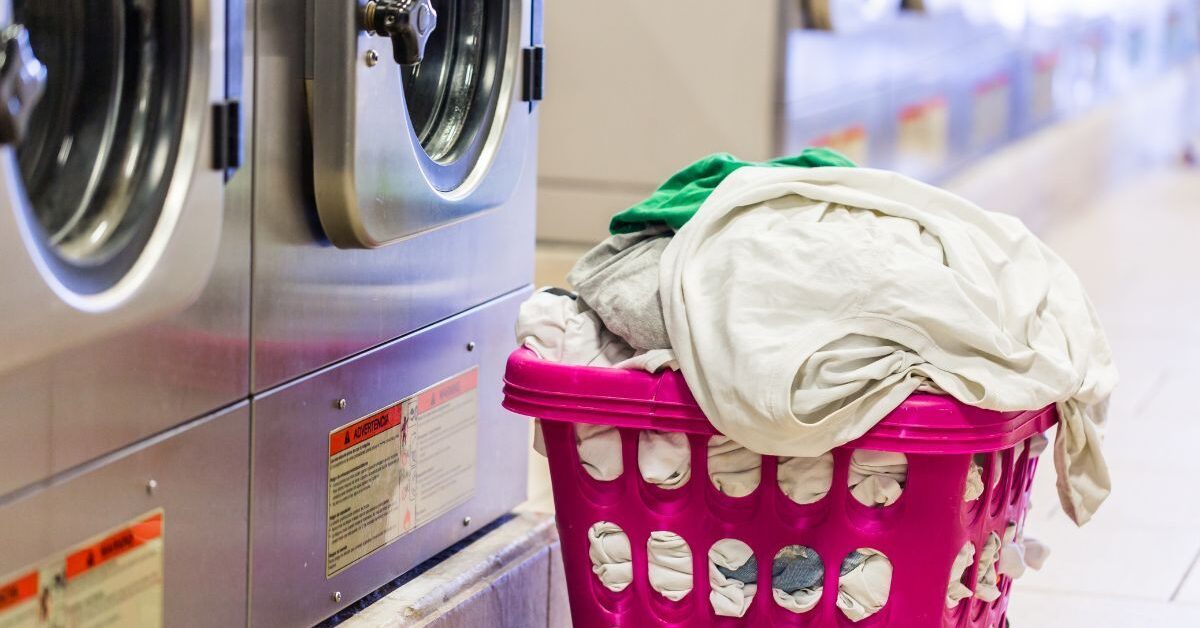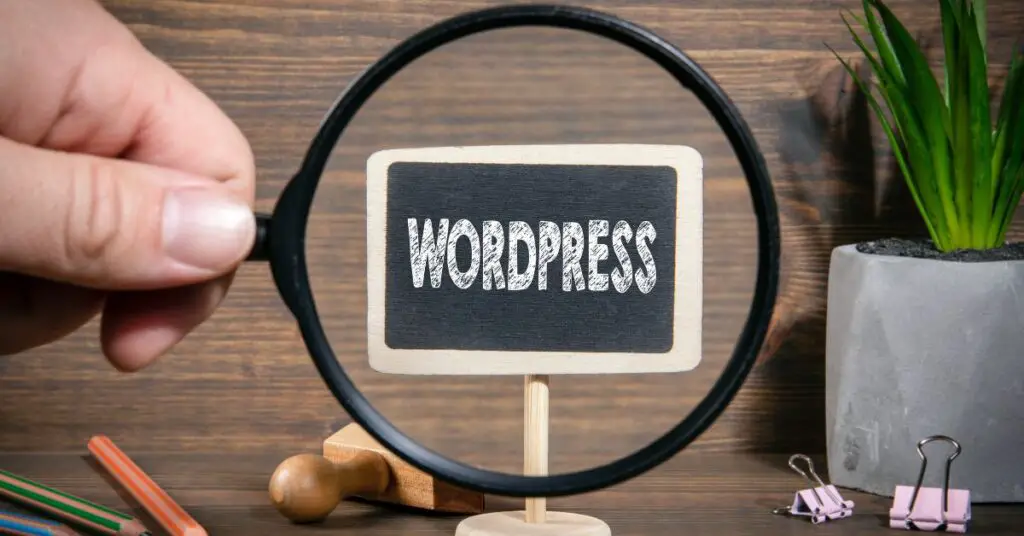As an Amazon affiliate, I may earn from qualifying purchases. Please read our Disclaimer and Privacy Policy.
Wondering how to start a laundromat business with no money?
Starting a laundromat business without any initial capital might sound like an impossible feat. It is, however, entirely achievable. Will there be challenges along the way? Very likely. Will this blog post help you get started? Absolutely.
Venturing into the world of small businesses, particularly with your own laundromat, can be an exciting journey—even without a hefty bank balance to begin with.
In this blog post, we’ll give you tips on how to start your business plan, explain the various types of laundromat services, and highlight 9 crucial steps on how to start a laundromat business with no money.
The reality is that you may not have much money to start with, but you’ll need to secure funds either in the form of bank loans, small business loans, grants, crowdfunding, or bootstrapping.
You can also explore creative financing options such as seeking partnerships, negotiating lease agreements with landlords, or applying for grants and community funding to help offset startup costs.
Keep reading to find out how you might use any of these approaches to securing finances for your new business.

First Steps in Starting a Laundromat Business With No Money
If you’re looking to start a laundromat business with no money, the first thing you should do is thoroughly research the industry and your local market. Why? Because you’re going to need to secure funds one way or another.
I explain why and how market research is so important further into this post, so keep reading.
By gaining a deep understanding of the industry and leveraging available resources, you can begin to formulate a strategic plan to launch your laundromat business successfully, even with limited funds.
Get Started With a Coin Laundry Business
For a startup with no initial capital, a self-service coin-operated laundromat is often the best type of business to consider.
Here’s why:
- Low overhead costs. Coin-operated laundromats typically require minimal staffing and operational expenses compared to full-service laundry.
- Self-service coin-operated machines allow for immediate revenue generation without the need for extensive inventory or additional services.
- This type of laundromat allows you to operate 24/7
- A self-service coin-operated laundromat model allows you the opportunity to scale your business in the future
The downside of starting a coin-operated laundromat service includes a high initial investment to get started. This could be a barrier to some, especially if you can’t secure financing.
However, if you can clearly articulate your revenue goals, initial startup costs, and prove your market research through a solid business plan, you could find yourself heading down the path of your dreams.
Costs to Start a Coin Operated Laundromat Service
The following is for informational purposes only and doesn’t represent or take the place of market research or planning. However, it will give you a general idea of how much money you will need to obtain in order to start a coin-operated laundry service.
Let’s Assume You Start with Three Washers and Three Dryers
| EXPENSES | APPROXIMATE COST | SUBTOTAL | TOTAL |
| Commercial-grade washers | $1000-$5000 depending on brand | $5000 | |
| Commercial-grade dryers | $1000-$5000 depending on brand | $5000 | |
| Facility renovations | Factor the cost of interior remodelling, plumbing, electrical work, flooring, etc. | $20,000 | |
| Utilities and Installation | Water, electricity, gas, ventilation, security systems | $20,000 | |
| Coin Systems | This includes coin-operated mechanisms (coin slides, boxes, card readers, and related hardware) | $2000 | |
| Additional Equipment | You need to consider things like laundry carts, folding tables, seating, trash cans, and cleaning supplies | $1500 | |
| Licenses and Permits | You may need to obtain a business license, permits, and zoning approvals. | $2000 | |
| Insurance | Insurance is necessary to protect your business from liability, property damage, theft, etc. | various costs | |
| Business expenses | These include your marketing, advertising, initial supplies, signal, legal fees, accounting software, etc. | $5000 | $60,500 |
Other Types of Laundromat Services
While a self-service coin-operated laundromat is a common and straightforward option, there are several other types of laundromat services that entrepreneurs might consider.
Here are some alternative laundromat services to explore:
Drop-off and Pickup Laundry Service
Offering a drop-off and pickup laundry service can cater to customers who prefer the convenience of having their laundry washed, dried, and folded by professionals.
This service can be particularly appealing to busy professionals, families, or individuals with limited time.
Dry Cleaning Service
Incorporating dry cleaning services into your laundromat business can attract customers who require specialized care for delicate fabrics or garments that cannot be washed in traditional machines.
Partnering with a reputable dry cleaning company or investing in dry cleaning equipment can expand your service offerings.
Speciality Laundry Services
Consider offering specialty laundry services tailored to specific customer needs, such as eco-friendly or organic cleaning options, pet bedding cleaning, or garment alterations and repairs.
By catering to niche markets, you can differentiate your business and attract loyal customers.
Mobile Laundry Services
Mobile laundry services, where customers schedule pickups and drop-offs for their laundry at their convenience, can be a convenient option for busy individuals or those without access to transportation.
Operating a fleet of laundry vans equipped with washing and drying facilities allows you to serve customers at their doorstep. Of course, this might not be viable in the early stages of your business.
Laundry Subscription Services
Implementing a subscription-based model where customers pay a monthly fee for unlimited laundry services can provide a steady stream of recurring revenue for your business.
This model can appeal to frequent users who value convenience and cost-effectiveness.
Commercial Laundry Services
Targeting businesses, hotels, restaurants, hospitals, or other commercial establishments in need of laundry services can be a lucrative opportunity.
Providing bulk laundry services for linens, uniforms, and towels can generate consistent revenue from large-volume clients.
Laundry Pickup Lockers
Installing laundry pickup lockers in residential or commercial buildings allows customers to drop off and pick up their laundry at their convenience, 24/7.
This self-service option appeals to busy urban dwellers seeking flexibility in their laundry routine.
By diversifying your laundry services to meet a variety of customer needs and preferences, you can maximize your business’s potential for success and profitability. Evaluate your target market, competition, and available resources to determine which types of services are most viable for your business venture.

9 Rules to Start a Laundromat Business With No Money
Rule 1. Market Research and Identifying Your Target Audience
Before diving into any business venture, conducting thorough market research is essential.
Identify your target market, which could include busy professionals, college students, or even existing laundromat users in your area. Understand their needs, preferences, and pain points to tailor your business model accordingly.
Rule 2. Crafting a Solid Business Plan
A detailed business plan serves as your roadmap to success. Outline your business structure, whether it’s a sole proprietorship or a limited liability company (LLC).
Include your marketing strategies, potential revenue streams such as additional services like dry cleaning or fabric softener sales, and a projection of your startup costs and ongoing expenses.
For more information on how to create a detailed business plan, read this post by Quickbooks: The 10-Part Business Plan & Downloadable Template.
Rule 3. Securing Financing
While traditional small business loans might seem out of reach without any initial capital, there are alternative financing options available.
Consider seeking funding from the Small Business Administration (SBA), exploring equipment financing for washing machines and maintenance costs, or even reaching out to angel investors who might be interested in your unique business idea.
Once you’ve completed a solid business plan, you are ready to move on. The following are some tips to get you moving in the right direction:
- Research Banks: Identify banks that offer small business loans and consider factors like interest rates and customer service reputation.
- Gather Necessary Documents: Collect personal identification, business registration documents, tax returns, financial statements, and collateral documentation.
- Check Your Credit Score: Ensure your personal and business credit scores are in good standing.
- Determine Loan Amount and Terms: Decide the loan amount and terms, including interest rates, repayment schedule, and loan term.
- Schedule a Meeting with a Bank Representative: Contact the bank to meet with a small business loan officer.
- Present Your Business Plan: Clearly articulate your business concept, target market, and growth potential during the meeting.
- Provide Collateral: Offer collateral, such as business assets or personal guarantees, to secure the loan.
- Negotiate Loan Terms: Discuss and negotiate the loan terms with the bank representative.
- Complete the Loan Application: Fill out the loan application form and provide supporting documentation.
- Follow Up Regularly: Stay in touch with the bank representative to track the progress of your loan application.
- Review and Sign Loan Agreement: Review the loan agreement, sign it, and arrange for the disbursement of funds.
For more information on securing business loans, check out the Small Business Administration.
STEP 4. Leveraging Social Media and Marketing
Harness the power of social media to promote your laundromat business for free.
Create engaging content, run targeted ads, and interact with your target audience online. Word-of-mouth marketing can also be incredibly effective in attracting customers, so focus on providing exceptional service to build a loyal customer base.
Help! I’m new to social media marketing
Don’t worry. Anyone can master the basics of social media marketing, even if you don’t already have a large following.
Here are some basic steps to get you going.
You should also read Social Media Marketing Strategy by Hootsuite for more detailed information.
- Create Social Media Profiles: Establish profiles on platforms like Facebook, Instagram, and Twitter using your business name and logo.
- Share Engaging Content: Post laundry care tips, behind-the-scenes glimpses, customer testimonials, and promotions to keep followers interested.
- Visual Content: Use photos and videos to showcase your facilities, equipment, and services for maximum engagement.
- Interact with Followers: Respond promptly to comments, messages, and reviews, showing appreciation for positive feedback and addressing concerns politely.
- Utilize Hashtags: Increase visibility by using relevant hashtags related to laundry, cleaning, and local events.
- Run Contests and Giveaways: Host contests or giveaways to encourage engagement and attract new followers with enticing prizes.
- Partner with Influencers: Collaborate with local influencers to expand your reach and build credibility.
- Promote Special Offers and Events: Advertise promotions, discounts, and events to incentivize visits and reward loyal followers.
- Share User-Generated Content: Encourage customers to share their experiences and feature user-generated content to showcase satisfaction and social proof.
- Monitor Analytics: Use social media analytics tools to track performance metrics and adjust strategies accordingly for optimal results.
STEP 5. Finding the Ideal Location
Choosing the right location is crucial for the success of your laundromat business.
Where’s the demand?
Start by conducting a market analysis to identify areas with high demand for laundry services and limited competition. Look for neighborhoods with a high population density, apartment complexes, student housing, or areas with a lack of access to in-unit laundry facilities.
Who’s your demographic?
Analyze demographic data for potential locations, including population demographics, household income levels, and average household size. Choose areas with a demographic profile that matches your target market, such as young professionals, families, or students.
Can you be seen?
Consider the visibility and accessibility of potential locations. Look for storefronts in busy commercial areas, near major intersections, or on main thoroughfares with high foot traffic. Visibility from the street and ample parking are also important factors to consider.
Is the location accessible?
Ensure the location is easily accessible to your target customers, including those with disabilities or limited mobility. Evaluate proximity to public transportation, parking availability, and ease of entry and exit for customers carrying heavy laundry loads.
Do you know the zoning regulations?
Check local zoning regulations and ordinances to ensure the chosen location is zoned for commercial use and permits a laundromat business.
Obtain any necessary permits or licenses from the local government before proceeding with the lease or purchase of the property.
Zoning and Licensing Contacts
To obtain zoning regulations and permits to start a laundromat business, individuals typically need to contact local government agencies responsible for land use planning, zoning, and business licensing. Here are the typical places to inquire about zoning regulations and permits:
- City or municipal planning department.
- Building and Code Enforcement Department.
- Business Licensing Office
- Zoning Board or Commission
- Online resources
- Consult with attorneys, real estate agents, or use planners who specialize in commercial real estate and zoning regulations.
STEP 6. Managing Costs and Expenses
Managing costs and expenses when starting a laundromat business without a lot of money requires careful planning, resourcefulness, and prioritization. Here are some strategies to effectively manage costs and expenses:
Start small
Begin with a lean and efficient operation by starting with a smaller space and a limited number of machines. Focus on offering essential services initially and expand gradually as your business grows and generates revenue.
When I started my small business (blogging!) I turned to Quickbooks.com.
Equipment acquisition
Instead of purchasing new equipment outright, consider leasing or renting washers and dryers from equipment suppliers. Look for used equipment in good condition or explore equipment financing options to spread out the cost over time.
Negotiate lease terms
Negotiate favorable lease terms with landlords to reduce rental expenses. Look for landlords willing to offer flexible lease terms, rent concessions, or tenant improvement allowances to lower upfront costs and improve cash flow.
DIY renovations
Save money on renovations and repairs by doing some of the work yourself or enlisting the help of friends and family members. Focus on essential renovations that improve the functionality and aesthetics of the space while minimizing costs.
Energy efficiency
Invest in energy-efficient washers and dryers to reduce utility costs over time. Choose machines with high Energy Star ratings that consume less water and electricity, leading to long-term savings on utility bills.
Operational efficiency
Implement efficient operational processes and workflows to minimize waste, reduce downtime, and optimize productivity. Train staff (if applicable) to operate machines effectively, handle customer inquiries, and maintain cleanliness and safety standards to avoid costly mistakes or accidents.
Marketing on a budget
Utilize low-cost or free marketing strategies to promote your laundromat business. Leverage social media platforms, create a professional website, and engage with the local community through networking, partnerships, and word-of-mouth referrals.
Outsource services
Consider outsourcing non-core functions such as accounting, marketing, or cleaning services to freelancers or independent contractors instead of hiring full-time staff. Outsourcing allows you to access specialized expertise on an as-needed basis without the overhead costs of permanent employees.
Monitor expenses
Keep track of all expenses and regularly review your budget to identify areas where you can cut costs or reallocate resources more effectively. Look for opportunities to negotiate better deals with suppliers, reduce discretionary spending, and optimize operational efficiency.
Seek financial assistance
Explore alternative financing options such as microloans, small business grants, or community development programs aimed at supporting entrepreneurs with limited funds.
Research available resources and apply for financial assistance to bridge any gaps in funding and support your laundromat business’s growth.
STEP 7. Providing Excellent Customer Service
In the competitive laundromat industry, providing excellent customer service can set you apart from the competition.
Offer convenient amenities such as folding services, maintain clean and well-maintained facilities, and listen to feedback from your customers to continuously improve your business operations.
Some ways to provide top-of-the-line customer service include the following:
- Offer 24/7 access
- Develop a mobile app that allows customers to check machine availability, etc.
- Provide drop-off and pickup laundry services.
- Offer complimentary wi-fi access and entertainment options such as television screens or gaming consoles
- Offer family-friendly amenities
- Make your facility pet friendly
- Offer a customer loyalty program
STEP 8. Scaling Your Business
As your laundromat business grows, explore opportunities for expansion and diversification. Consider franchising your business model or offering additional services to meet the evolving needs of your customer base.
Scaling a laundromat business should be considered when the business has reached a certain level of stability and profitability, and there is a clear opportunity for growth. Here are some indicators that may suggest it’s time to scale your laundromat business:
- Consistent revenue growth
- Maximized capacity
- Positive cash flow
- Customer feedback and demand
- Financial resources allow for expansion
- Ensure you have management capacity
- Consider your long-term vision
Conclusion
Starting a laundromat business without any money might seem daunting, but with careful planning, creativity, and perseverance, it’s entirely possible.
By leveraging social media, identifying your target audience, and providing excellent customer service, you can build a successful laundromat business from the ground up, even with limited funds.
So roll up your sleeves, craft a detailed business plan, and take the first step towards entrepreneurial success in the lucrative laundromat industry.



